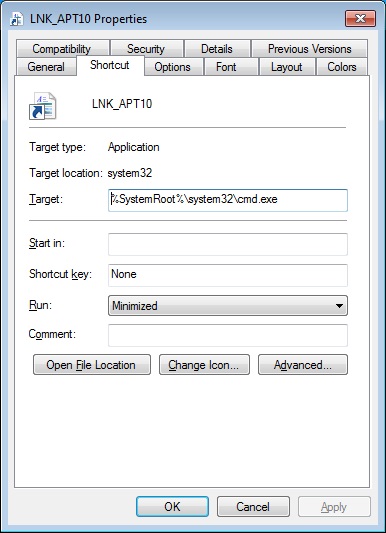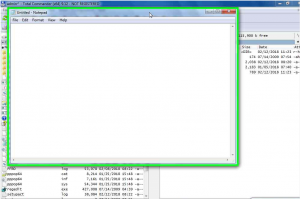

That will create a shortcut (lnk file) on your Desktop, which you can move to where you need that to be. I can find the file, I can extract some values, I just can't seem to find anything that looks like the target, so I have nothing to change. Find the application or file you want to create a shortcut to, then right click that and choose, 'Send to - Desktop (create shortcut'.
#Dos create lnk file update#
What I want is for PowerAutomate to copy an existing link to the required folder, and then update the target with the correct local network path. I have tried to create using group policy preferences shortcuts and creating a File System Object shortcut but I receive an. lnk to some kind of useable text document, I feel like I might have a path forward.
#Dos create lnk file how to#
I can get properties and metadata from it, but none of that seems to be the "Target" field that I need to adjust.ĭoes anyone have an idea about how to accomplish this goal? If I could convert the. To launch the executable that the shortcut targets to, just write the shortcut filename in the same way as you will do to run a executable file, as follows: Echo OFF 'C:path yo tour shortcut.lnk' Exit Or also: Echo OFF Start /Wait '' 'C:path yo tour shortcut.

Now, right-click on the new shortcut and select Properties. lnk extension is just a shortcut to a file. For name, provide the program (or file) name for which you are creating the shortcut, then hit Finish. In the field that asks you to enter the item’s location, enter: explorer.exe. I can easily get Power Automate to find the shortcut file. Here are the steps: Create a new shortcut using Create Shortcut Wizard (right-click > Shortcut). If I right click on it, and go to properties, I can see the target there. What I can't do is extract the target value from the. So I know where the folders are and I have all of the fields I would need to update this shortcut. Fortunately, I have developed a flow that creates the new folders for people, and populates them with various files they will need to do their job. I need to make a new link for every new job folder. These design folders are baked into larger job folders that are created from a template and used over and over again. My problem now, is that this is not a one time deal. This would make it a lot easier for me to explain to people how to use the "local" file path.

From the OneDrive client, selecting the former would follow the mapped cloud path, while selecting the latter would open a new instance of file explorer using the local network path.

I could have a synced SharePoint folder "01_Design", create a shortcut to it and call that that "02_Design Local". I experimented a bit, and discovered that I could use a local link to a folder (a shortcut) with the OneDrive client, and it would defer to using the network file path. I want anyone working in those design folders to be on the network. So currently, someone could access a file from the browser, from the OneDrive client, and now from the Network folder. Our goal in creating this folder was to allow designers working on 3D models access to local file paths that would prevent potential issues involving having the same file open in two places. Outside of the file sync itself, very little else from SharePoint passes through to the network. The largest problem is that its not a true SharePoint sync being run by Microsoft SharePoint, but its more of a folder sync being managed by the company who runs our network. This was supposed to give us the best of all worlds, but mostly seems to have ended up being a problem that I have to sort through. We recently set up a synced SharePoint volume on our network drive. I ended up with the task of moving us into the future with the PowerPlatform. I work for a midsized custom fabrication company that is currently caught between having used a network drive for years and having recently experienced the power and flexibility of working in the cloud. Similar to URL files, the LNK file extension is not shown in the filename, even when the option to hide file extensions is disabled.I have a interesting conundrum. Those attributes can be set by right-clicking the shortcut file and selecting "Properties". LNK files with shortcuts to an EXE program file can specify how the program should be run. Thus, when clicking on the icon, the program operates just as if the original icon would have been clicked. LNK files are typically implemented as a small file that comprises of a target GUID or URI to an object or the name of a target program represented by the shortcut. The icon used for the LNK file is usually the same icon used for the target program with a curled arrow indicating that it's a shortcut. By selecting “Create Shortcut” option the LNK file is created. A shortcut file can easily be created by clicking the right mouse button on a file the shortcut should be created from.
#Dos create lnk file windows#
LNK files are also known as Shortcut Files that are being used as a reference by Windows to an original file containing the shortcut target type, filename, location, the program that can open the file, and a shortcut key which is optional.


 0 kommentar(er)
0 kommentar(er)
